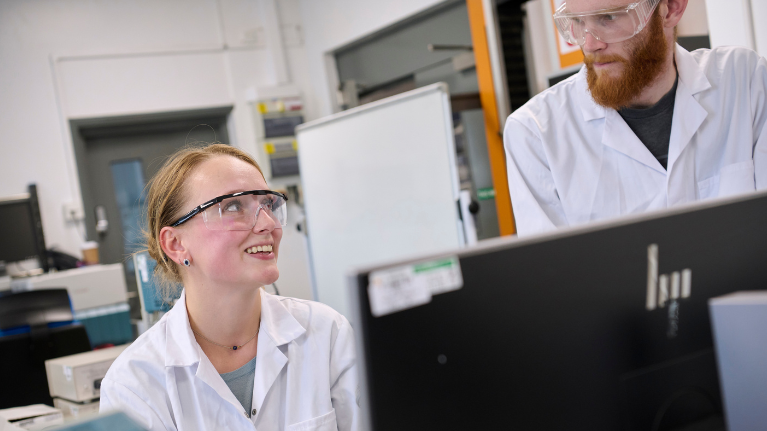
The I-Hydrate Project
The I-Hydrate Project - about us
Improving hydration in older people in care homes to reduce morbidity and prevent hospital admissions.
Jump to each section of the page:
Why is hydration important?
Keeping well hydrated is important for our physical and mental wellbeing. It's even more important as we age because a decline in the thirst reflex means older people tend to drink less and other changes such as loss of muscle tissue and kidney function affect the ability of the body to retain water.
Older people with poor mobility may find it difficult to drink and may also restrict how much they drink because they are worried about getting to the toilet. Preventing older people from becoming dehydrated is important because it causes many adverse effects such as urinary tract infection, falls, delirium and constipation and increases the risk of hospital admission.
Under-hydration has been recognised as a particular problem for people who are dependent on care staff to support their hydration. The I-Hydrate research project was undertaken in two west London care homes and aimed to understand how care is delivered to support the hydration of residents and what simple measures could be introduced to optimise the fluid intake of care home residents and improve the quality and safety of care.
About the I-Hydrate Project
This project aimed to understand and improve hydration care for elderly people living in residential care and was undertaken in two care homes in west London. We started out by finding out how much fluid residents consumed, the way hydration was organised, delivered and monitored, and worked with residents to test their fluid and drinking vessel preferences.
We found that most residents drank less than 1500ml a day, considerably less than the recommended intake of at least 2000ml for women and 2500ml for men.
Insufficient opportunities for residents to be offered or assisted to drink during the day was a key factor in the poor fluid intakes. Other factors such as a limited choice of drinks and cups that were difficult to hold made drinking more difficult for residents.
We created a local project team in each home which included the unit manager, nurses, healthcare assistants, residents and relatives. Using improvement science methods, we worked with the care home staff to design and test several simple strategies to make it easier for staff to support the hydration of their residents, to offer residents more choice of drinks and better cups to drink from.
We were able to demonstrate that these changes increased the amount of fluid that residents drank and were associated with a reduction in the use of laxatives.
The I-Hydrate Resources
These resources will give you some ideas to help you support your residents with their hydration needs. They show that by making just a few small changes to the way in which hydration is provided can make all the difference to the amount of fluids residents consume.
The I-Hydrate Resource Pack
This describes the simple interventions that we used to improve fluid intake of residents and contains some basic training material for staff.
- Download the I-Hydrate Resource Pack (pdf, 3.48mb)
For an accessible version of this file, please contact jennie.wilson@uwl.ac.uk
-
Posters, forms and templates
- Hydration care audit sheet (.doc, 25 kb)
- Questions to ask the resident (or the resident’s family/friends) (.doc, 15 kb)
- Plan-Do-Study-Act planning tool (.doc, 24 kb)
- Example drinks menu (.pdf, 3 mb)
- Staff allocation sheet for protected drinks time (.doc, 16 kb)
- Mealtime guides (.pdf, 6 mb)
- Drinking vessel testing sheet (.doc, 19 kb)
- Hydration posters (.pdf, 4 mb)
- Thickened fluids poster (.pdf, 6 mb)
- Know your residents (.doc, 15kb )
- Typical day in your care home (.doc, 14 kb)
For accessible versions of these files, please contact jennie.wilson@uwl.ac.uk
Training videos
Training videos
These short training videos were filmed in one of the care homes. They illustrate different aspects of supporting hydration care and demonstrate some of the key strategies we used to improve residents fluid intake.
I-Hydrate infographic
I-Hydrate infographic
We've put together an at-a-glance guide to helping older people stay hydrated, whether you're looking after a relative at home, popping in on a friend or caring for someone in a care home or hospital.
Dehydration matters
Staying hydrated is essential for good health. Dehydration can cause:
- urinary tract infections (UTI)
- constipation
- falls
- hospital admissions
Remove barriers to drinking
- Make a choice of drinks easily available and in reach
- Use cups that an older person can hold easily
- Avoid heavy mugs or cups with small handles
- Encourage those who worry about incontinence to keep drinking
Identify signs of dehydration
- Dry mouth or tongue
- Headaches
- Confusion
- Drowsiness
- Unsteadiness
Not just water
- Getting enough fluid is what matters most
- Water, squash, fizzy drinks, juice, tea, and coffee all count
- Even fluid-rich foods like soup, jelly, ice cream and yoghurt are important sources of fluid
Keep the drinks coming
- Make sure older people have plenty of chances to drink
- 1.5 litres is the minimum amount of fluid that adults need every day - this is equivalent to at least 8 large cups or mugs
Impact, research team and publications
-
Impact
-
Research team members
- Aggie Bak
- Professor Heather Loveday
- Professor Jennie Wilson
- Carolynn Greene
- Dr Amalia Tsiami
- Deebs Canning
-
Research publications
- Improving hydration of care home residents by increasing choice and opportunity to drink: A quality improvement study
- Improving fluid consumption of older people in care homes: an exploration of the factors contributing to under-hydration
- I-Hydrate training intervention for staff working in a care home setting: An observational study
- An exploration of hydration care for nursing home residents living with dementia
- Practical solutions for optimising hydration in care home residents
Find out more
-
Research Centres and Groups
Find out about our multi-disciplinary areas of expertise, PhD research, and teaching.
-
Research impact
Learn how our PhD research has helped communities locally, nationally and internationally.
-
The Graduate School
If you are interested in studying for a PhD or Professional Doctorate, the Graduate School is here to support your research.













